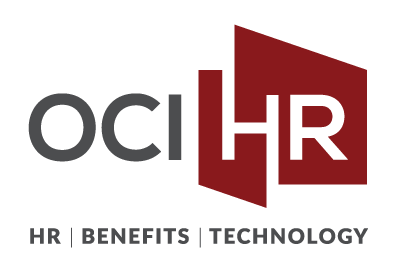Association health plans aren’t the only option for small employers looking to offer health care benefits.
By Dan Cook | August 14, 2018 at 10:37 AM
Employer health clinics are one example of an innovative approach to health care that small business are using to recruit and retain employees. (Photo: Shutterstock)
Association health plans either will or will not soon represent one health coverage option for small- and mid-sized employers, depending upon the outcome of legal challenges to the Trump administration’s loosening of rules that had restricted AHPs.
But even if the challenges fall short, the fact remains that AHPs and even health savings plans are less than ideal from an employee standpoint. In the current tight job market, they’re hardly an incentive to join an organization.
But some employers are taking steps to enhance their “skinny” plans by offering options from an increasing array of benefits not tied to their plans. In many cases, these options are free to employees, and give employers a come-work-for-us selling point.
Employer health clinics are one example of an innovative approach to health care for small business employees. Companies such as Activate Healthcare partner with groups of small businesses to build and operate standalone clinics that offer a fairly full range of basic health care services, all free to employees.
Activate’s clinic in Defiance, Ohio has grown from serving its original three employers to nine in the small Midwestern town (pop. 17,000). The clinic is staffed by a medical team anchored by a primary care physician. The availability of services there has proved to be a huge success with Defiance Metal Products’ employees, says corporate benefits manager Jodie Mohr.
The 500 employees currently are covered by a health reimbursement plan, a high deductible plan that can lead to heavy out-of-pocket spending by the employee.
“We are always trying to lower our health care spend, but we want an affordable plan,” she said. “We try to provide an avenue that would encourage employees to make behavioral changes. Activate’s [clinic] model is focused on wellness, prevention and health coaching. It was exactly the platform we were looking for.”
Employees can see their primary care practitioner or another medical professional on a same-day basis most days, she said, to address immediate concerns. Hours are designed to fit their schedules: The clinic opens at 6:30 a.m. and is still open after work. And services are fairly comprehensive.
“The clinic is a wellness based, focused on annual physicals and regular screenings and so on. But it’s also a full functioning acute care clinic,” said JoEllen Frederick, Defiance Metal’s director of HR. “If you need labs drawn or vaccinations you can do that there. It fills 100 different prescriptions and handles all worker comp injuries.”
All free to employees, Mohr adds. Which she and Frederick unfailingly point out to prospective employees during the recruiting process.
Defiance Metal initially partnered with two other local employers to create the clinic. They signed a multi-year contract with Activate, but soon were getting requests from other area businesses that wanted to offer the clinic to their employees.
Today, nine employers share the clinic’s services, including some with fewer than 50 employees. Activate’s founders, Debra Geihsler and Peter Dunn, said they’ve had no trouble recruiting medical professionals to staff the clinics. Primary care physicians typically must cycle through three to four patients an hour under the traditional fee-for-service clinic model. With Activate’s clinics, the member employers pay a per member monthly fee, and doctors are paid a salary.
“We don’t process insurance, we don’t do billing,” Geihsler said. “And the doctors aren’t spending their time billing. Instead, they spend their time with patients.”
Dunn says typical appointments last 20 to 30 minutes, while annual physicals are typically an hour. “The patient is at the center of our model. They get healthier because they use the clinic’s services rather than postponing health care due to a concern about the cost.”
Dunn said Activate currently operate 60 clinics serving about 120,000 patients.
Other small-to-mid-sized employers are enhancing their plans by expanding wellness programs. At R & H Construction in Portland, Oregon, employees were moved from a PPO to a health savings account plan several years ago. In order to bolster employee health care, human resources built out an already existing wellness program with new options employees requested.
R&H created its wellness program internally years ago, Karen Swanzy, HR generalist, said. Employee feedback has shaped its development. When employees demonstrated an interest in help with financial planning and management, the company found a vendor, Human Investing, offering financial wellness counseling.
R&H took the program out into the field, with counselors traveling to the company’s far-flung construction sites around the region. Typical of its other wellness options, the service is free to employees and isn’t tied to incentives of any kind.
Another Portland company, Aliat, offers a group model plan of a different sort from Activate’s. “Our model is to group smaller employers into larger groups, like the goal of an association plan,’ said Robert Kohnle, D.C., President & Founder of Aliat. “The difference is, we share the employment with the smaller employers, creating one tax ID number for all employees (associations cannot do this). The reality is, we are a single source provider processing all administrative tasks, like, payroll, benefits, HR and workers comp.”
With the combined numbers of the aggregated small businesses, the tax ID “employer” qualifies for more traditional health coverage—with the attendant reduced cost. Aliat offers wellness options as well to the group.
“We then implement our wellness through our large group health plan, engaging the employees of each company, so they realize the results of their efforts in the form of rate controls for the health plan, participate in the savings etc.,” he said.
The quest for health-plan enhancing options has given rise to other ventures. Among them: Virta Health, a telehealth service specifically designed to help employees not only manage, but reverse, their Type 2 diabetes.
The company has a team of physicians and health coaches who, via the company’s telemedicine technology, offer expert and personalized treatment plans on fighting diabetes 2.
“Diabetes 2 is behavioral in nature and can be completely reversed with proper treatment,” said Mike Payne, Virta’s Head of Commercial and Policy. “We take the nutritional and lifestyle approach and, with the way we use technology, we engage employees in their own health care.
The service is relatively new (the company was founded in 2014). But already, Payne said, more than 60 percent of employees using the Virta Treatment have reversed their Type 2 diabetes.
“Most of our customers are large employers. That’s our sweet spot now,” he said. “But we are starting to work with businesses and their plans. They can either pay us directly, or we can bill their plans.”
With targeted solutions like Virta emerging as responses to employers’ three-pronged efforts to recruit/retain, better manage health care costs, and encourage a healthier workforce, the health care marketplace post-Obamacare continues to spin out disruptive and innovative new businesses. No one can say for sure what the future of employer plans looks like at this point. But clearly, the plodding iterations of the traditional PPO plan that were characteristic of past decades have ended

